The Gan Staircase
The Narva Museum continues to introduce us to the history of the most remarkable architectural landmarks of Narva. Today, we focus on the monumental and austere Gan Staircase, which can confidently be counted among the symbols of our city.
In the mid-19th century, Narva underwent urban improvement works. A water supply system was installed, and a boulevard was laid along the riverbank. In 1875, a stone staircase was constructed for quick and convenient descent from the Old Town area to the river and the bridge.
The initiative for the construction came from the mayor of the city, Adolf Gan. Subsequently, the staircase was named after him - the Gan Staircase. It consisted of 93 steps with six intermediate platforms and a wide stepped parapet. It is believed that its prototype could have been the famous Potemkin Stairs in Odessa, built according to the design of Francesco Boffo in 1841. Such a connection is quite possible since both Gungenburg (now Narva-Jõesuu), which was part of Narva at the time, and Odessa were developing as resort cities.
After World War II, the staircase remained, but due to the reconstruction of the Petersburg Highway, its length was reduced by one span from the bottom. In 2014, a cast concrete staircase was built, connecting the lower span of the Gan Staircase with the river embankment.
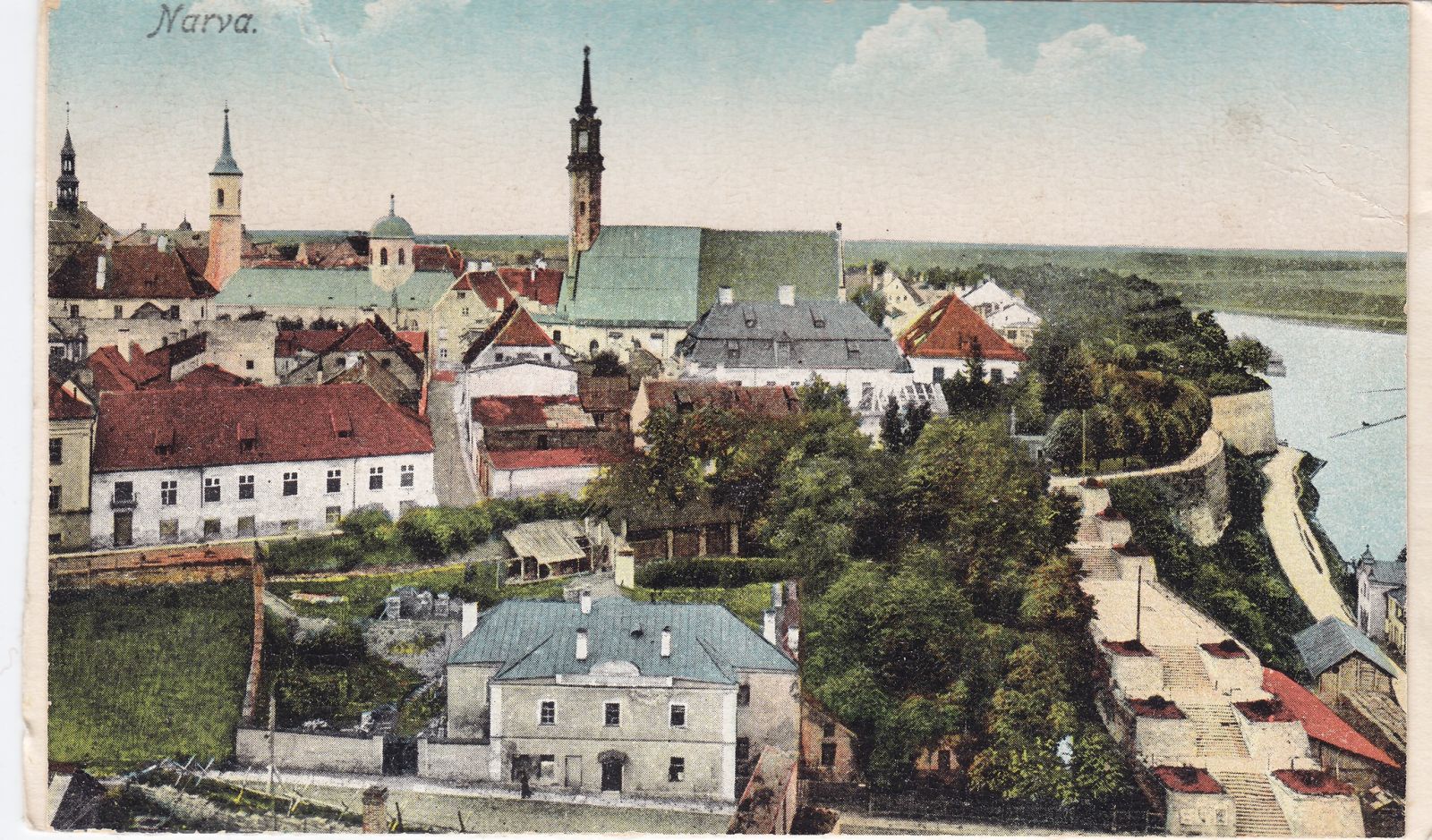
Hahni trepp Narva vanalinna panoraamis. 1920–1930
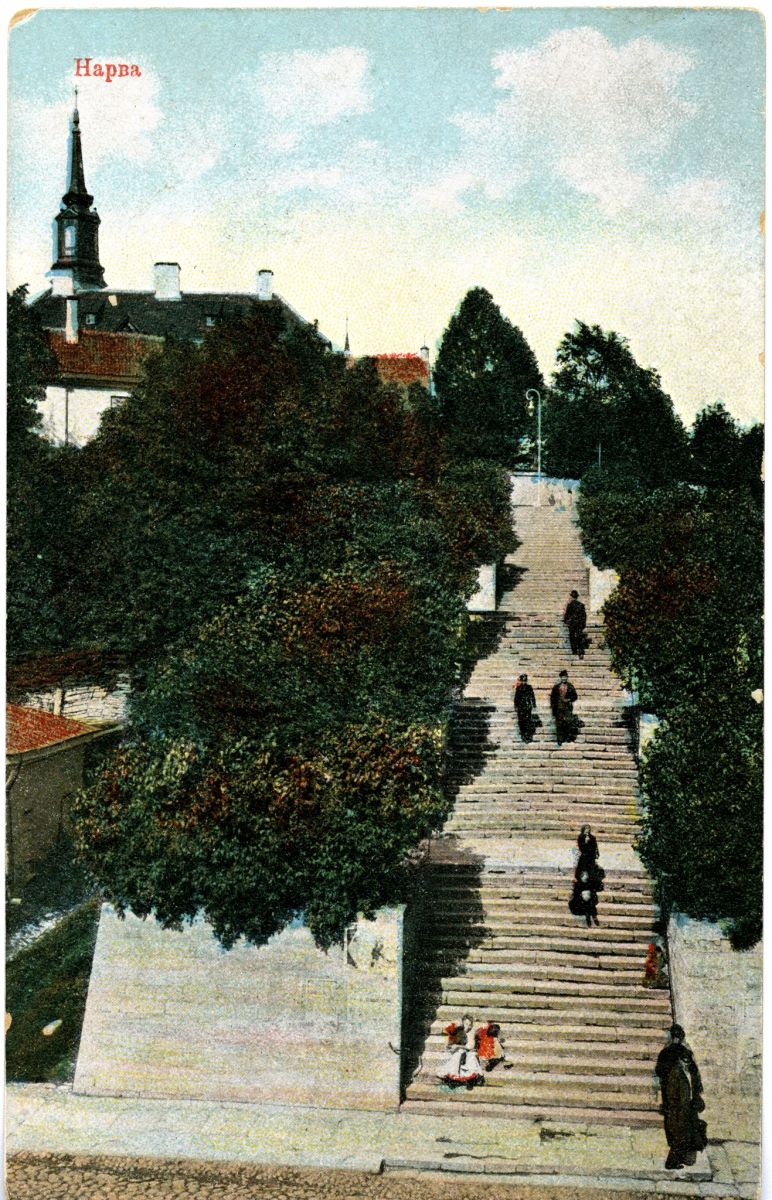
Hahni trepp. 1900–1910. Trükkija: K. Tiikmani muusikapood Narvas
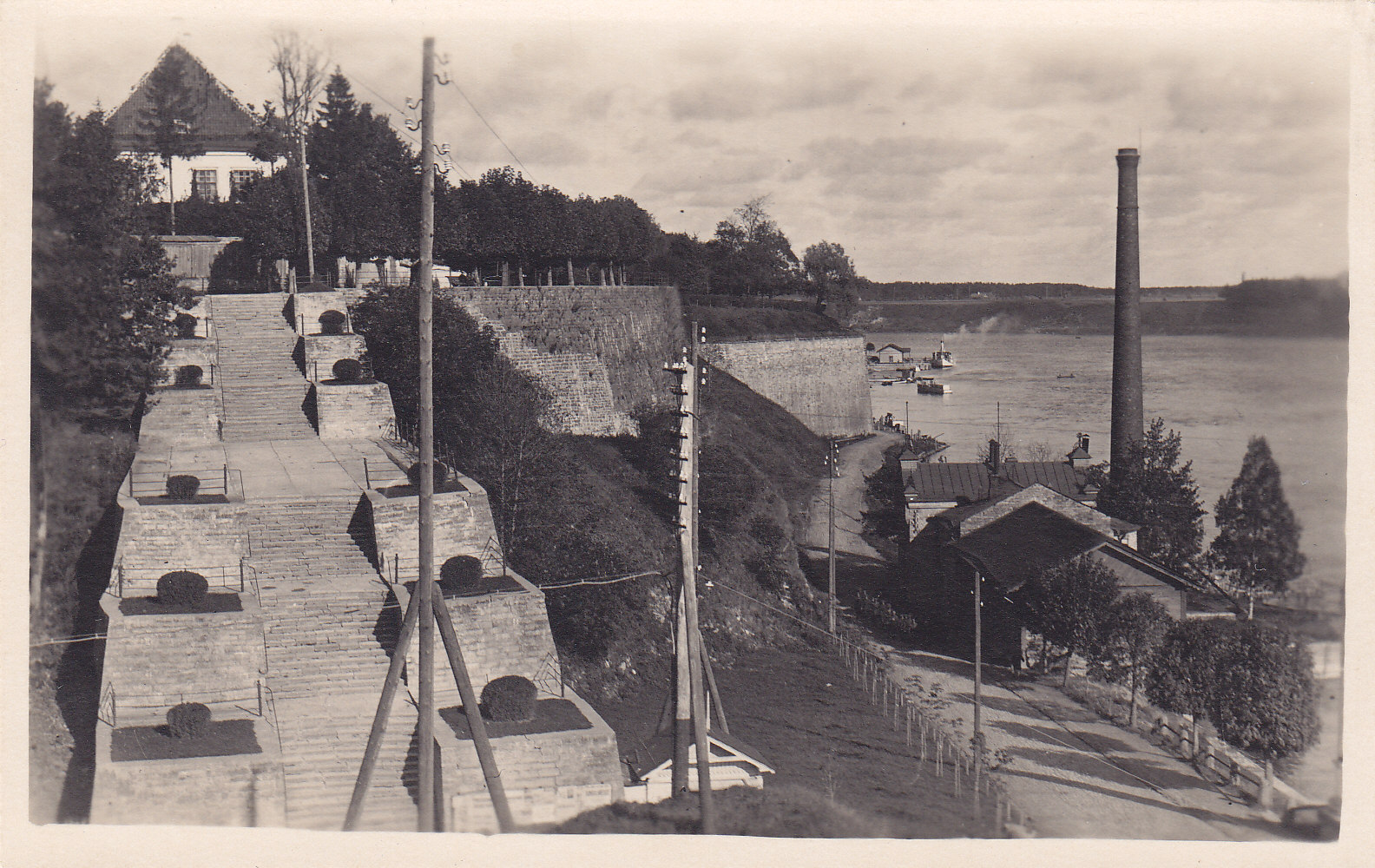
Vaade Hahni trepile, bastionidele ja pumbajaamale jõe kaldal. 1930–1940. Foto: O. Haidak
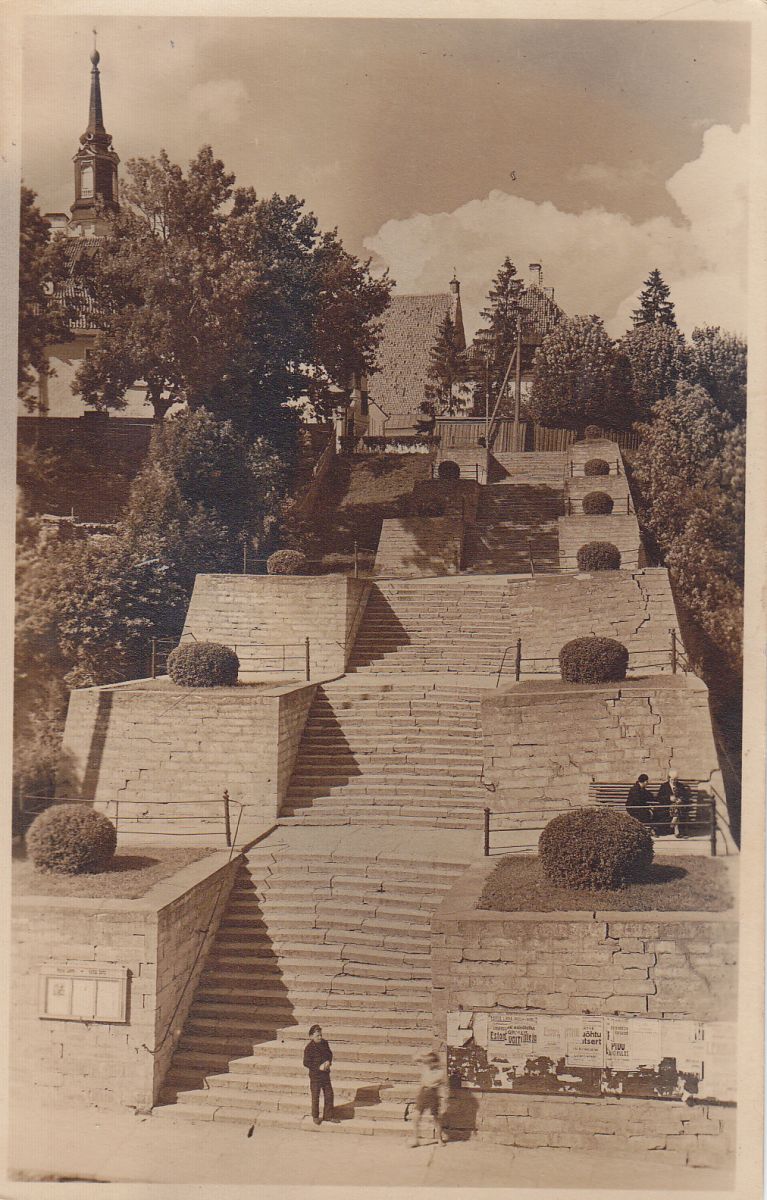
Hahni trepp. 1930–1940. ERKA foto Narva Muuseum SA
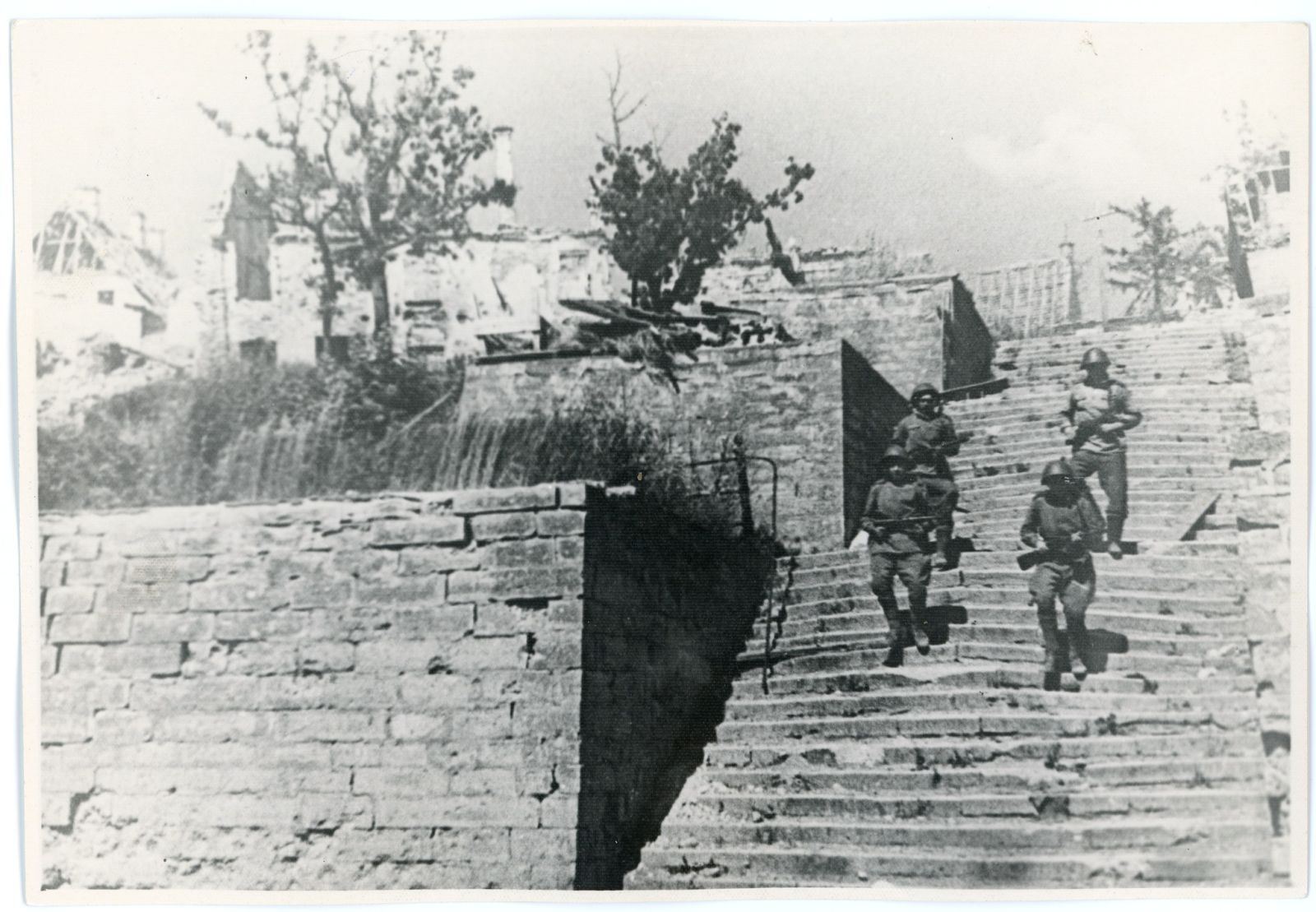
Hahni trepp. 1944; Narva Muuseum SA
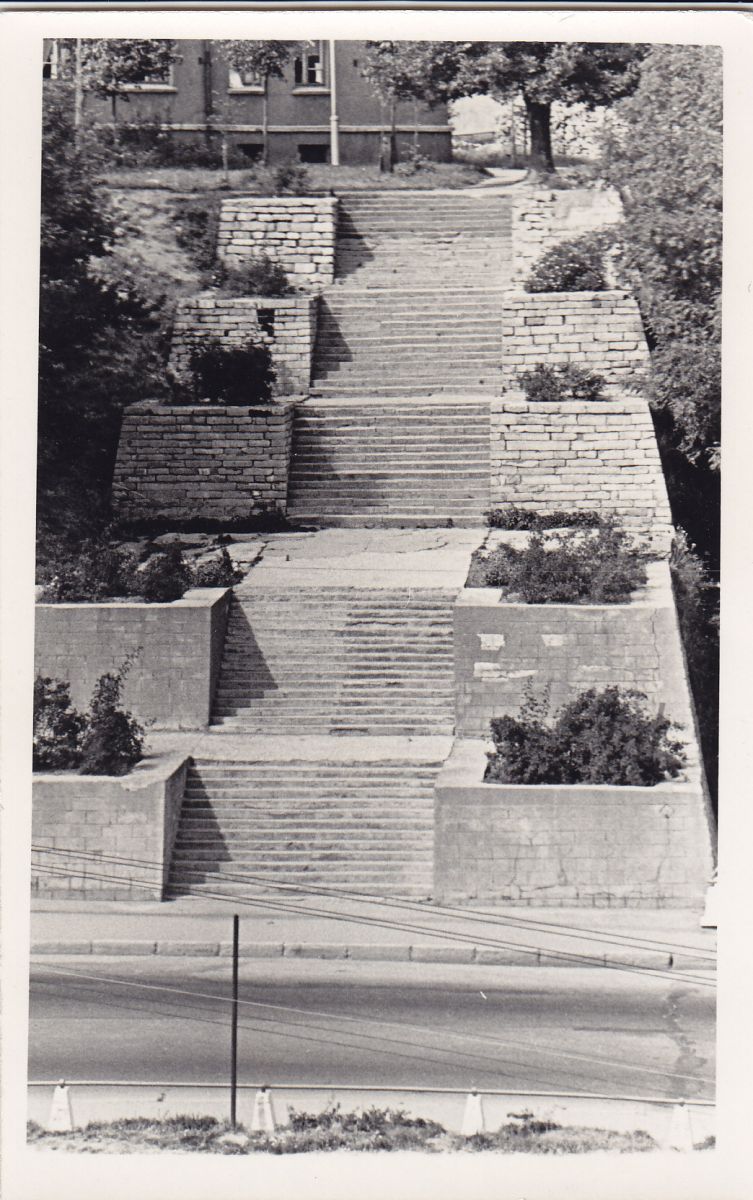
Hahni trepp. 1965–1970.; Narva Muuseum SA
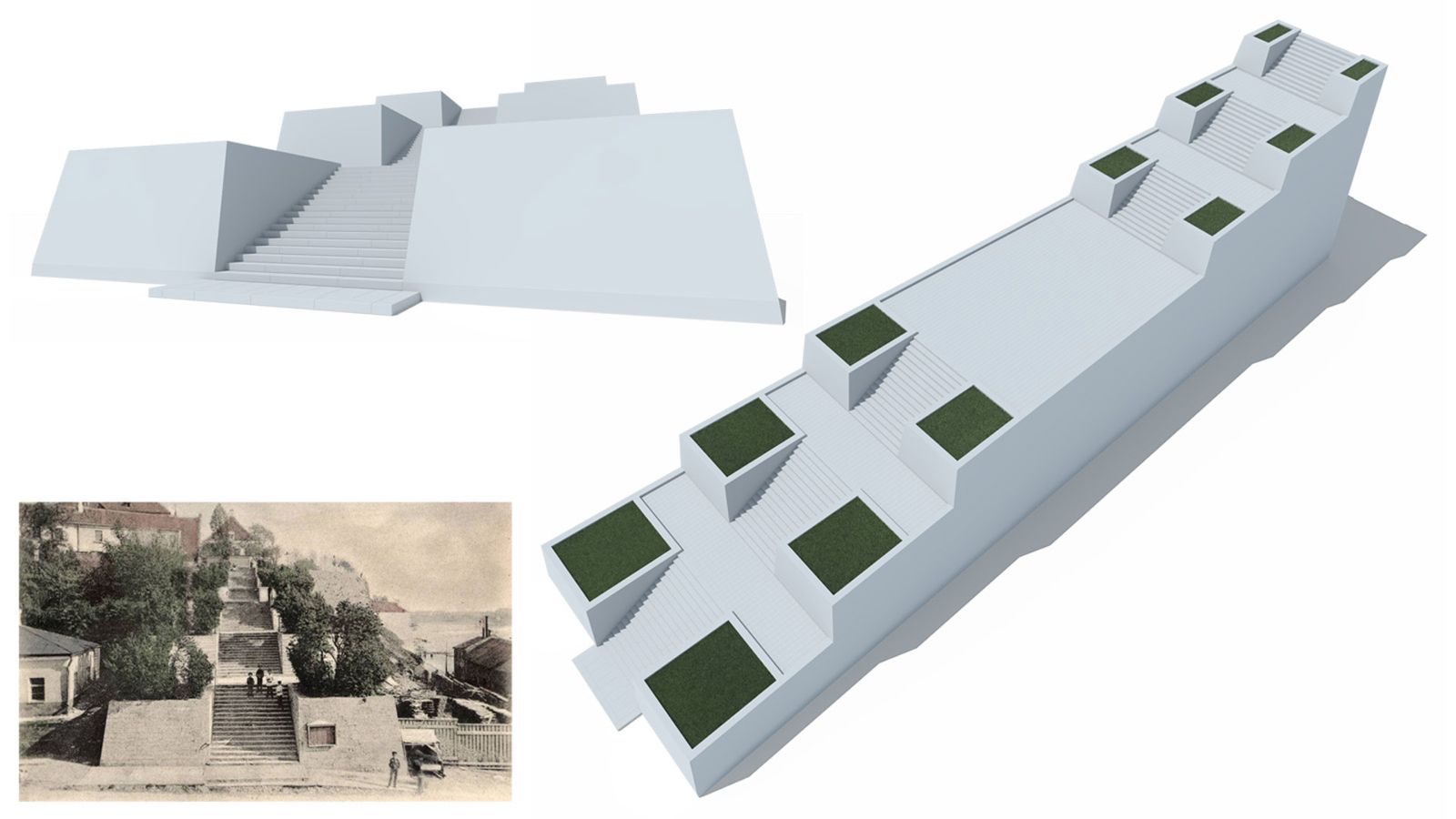
Mitu aastat Narva vanadest hoonetest 3D-visuaale loonud narvalase Sergei Zotikovi Hahni trepi töömaterjalid
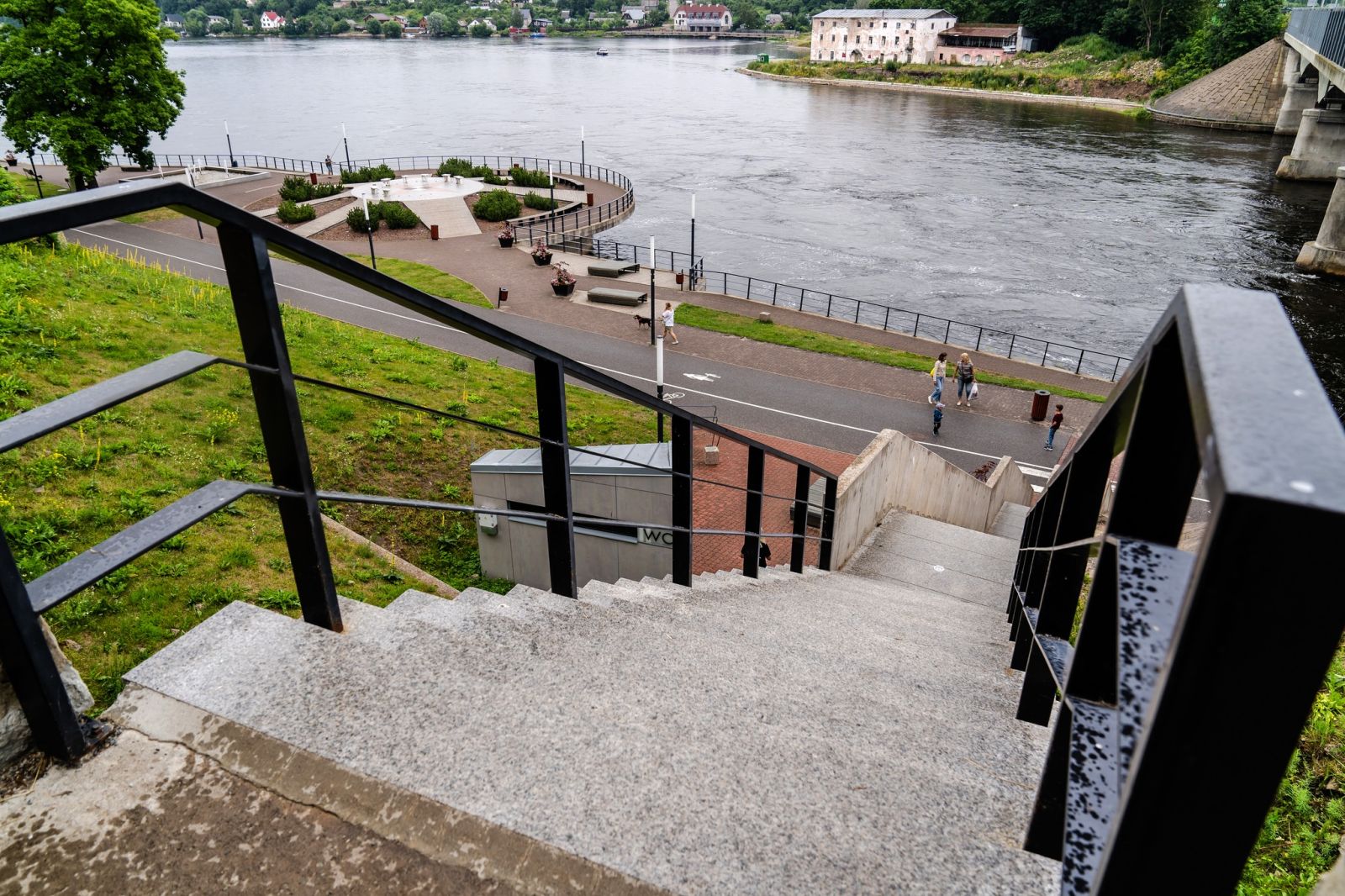
Uus trepp, mis ühendab Hahni treppi kaldapealsega. 2022. Foto: Anna Markova
